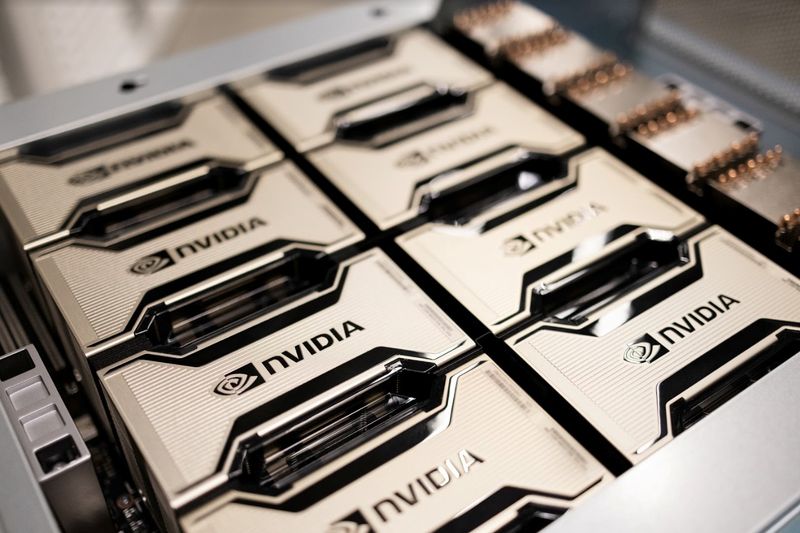This post was originally published on this site

After rallying in July with the rest of tech, the shares of companies involved in the production of semiconductors are tumbling again amid a steady stream of warnings about slumping demand. The Philadelphia semiconductor index slumped almost 10% in August, about twice the loss for the tech-heavy Nasdaq 100 Index. And high flyers like Nvidia (NASDAQ:NVDA) are back to flirting with lows reached two months ago.
With the Federal Reserve showing few signs of letting up on interest rate hikes, some on Wall Street are predicting the pain is just getting started as chipmakers are forced to rein in production following years of boom times. Citigroup Inc analysts said this week they expect another 25% decline for the semiconductor index, with slowing demand spreading from personal computers and handsets to cars and industrial products.
“I think we’ll continue to see headwinds across the board through the fall,” said Michael Matousek, head trader at US Global Investors. “We may not see a turn in the cycle until the Fed starts reducing rates or at least keeping them steady.”
The chip index is down 34% from its record close on Dec. 27, with 29 of the benchmark’s 30 stocks falling in that time. Nvidia is the worst performer, losing more than half its value. Wolfspeed Inc (NYSE:WOLF), a maker of automotive and industrial chips, is the sole gainer, holding on to an advance of a fraction of 1%.
Seagate Technology Holdings Plc became the latest to sound the alarm on Wednesday. The biggest maker of computer hard drives cut its revenue forecast for the current quarter, citing deteriorating economic trends and “cautious buying behavior” from businesses around the world and cloud customers in the US. Dell Technologies (NYSE:DELL) last week gave a pessimistic outlook on the second half, warning of “more cautious customer behavior.”
Nvidia fell in premarket trading Thursday after warning that new rules governing the export of artificial-intelligence chips to China may affect hundreds of millions of dollars in revenue.
The pain should come as no surprise to Wall Street analysts, who have been slashing profit estimates in the sector for most of the year. Projections for 2023 earnings growth for semiconductor-related companies in the S&P 500 Index have fallen 10 percentage points since January, compared with a roughly 6-point decline for the broader tech sector.
The gloom is welcome news for short sellers, who have added to bets against semiconductor stocks in recent months. Since the start of the third quarter, short interest in the US information technology sector is up $3.4 billion and about 80% of that increase is concentrated within chipmakers and equipment companies, according to data from S3 Partners.
Of course, there’s a case to be made that a lot of the bad news is already priced in to semiconductor stocks, which are approaching levels that have historically represented good buying opportunities. Priced at 15 times projected profits, the semiconductor index is below the average valuation over the past decade, according to data compiled by Bloomberg. Micron Technology Inc (NASDAQ:MU) and Qualcomm (NASDAQ:QCOM) are among the cheapest, trading at about 10 times.
Those multiples may not be as cheap as they look, given that earnings estimates are still falling. The Citigroup analysts, Christopher Danely and Kelsey Chia, see the industry “entering the worst semiconductor downturn in a decade given the recession and inventory build.”
“We maintain our belief that every company/end market will correct and we expect the SOX index to hit new lows,” they wrote in a research note.
Tech Chart of the Day
The Citi analysts noted that estimates fell during the second-quarter earnings season for the first time since the pandemic. A 25% decline in the semiconductor index would wipe out all the gains made during the pandemic. The SOX has fallen 32% this year, its biggest annual decline since 2008.
Top Tech Stories
©2022 Bloomberg L.P.



